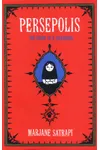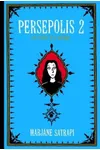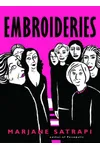Picture a French-Iranian storyteller who turned her turbulent childhood into a global sensation—meet Marjane Satrapi! With her bold graphic novels and films, she’s brought Iran’s complex history to life with humor, heart, and a touch of rebellion. Best known for Persepolis, Satrapi’s work bridges cultures, blending raw honesty with striking visuals to challenge stereotypes and captivate readers worldwide.
From surviving revolution to navigating exile, Satrapi’s journey is as compelling as her art. Her unique voice—part memoirist, part cartoonist—has made her a trailblazer in graphic storytelling, earning her accolades and a devoted fanbase. Let’s dive into the life and legacy of this remarkable creator!
The Making of Marjane Satrapi
Born in 1969 in Rasht, Iran, Marjane Satrapi grew up in Tehran in an upper-middle-class family with leftist leanings. Her parents, active in protests against the Shah’s monarchy, sent her to a French-language school, where she soaked up Western ideas. The 1979 Islamic Revolution turned her world upside down, bringing strict rules and the Iran-Iraq War’s chaos. At 14, fearing for her safety due to her outspoken nature, her parents sent her to Vienna. There, she faced alienation, heartbreak, and even homelessness before returning to Iran at 19. After a brief marriage and art studies, she moved to France in 1994, where her career took flight.
Marjane Satrapi’s Unforgettable Stories
Satrapi’s breakthrough came with Persepolis, a four-part graphic memoir (2000–2003) that chronicles her childhood in Iran and adolescence in Europe. Its black-and-white art, inspired by German Expressionism, mixes childlike simplicity with stark realities—think bombing raids and morality police alongside pop music and rebellion. Translated into English as Persepolis: The Story of a Childhood (2003) and Persepolis 2: The Story of a Return (2004), it won the Angoulême Coup de Coeur Award and sold over 2 million copies worldwide.
She followed with Embroideries (2003), a witty exploration of Iranian women’s lives through gossip, and Chicken with Plums (2004), a poignant tale of her great-uncle’s tragic love, which won the Angoulême Best Comic Book Award. In 2023, Satrapi coordinated Woman, Life, Freedom, a graphic anthology inspired by Iran’s 2022 protests, showcasing her commitment to women’s rights. Her style—direct, humorous, and deeply human—uses comics to make complex histories accessible, proving, as she says, “a drawing can say what 1,000 words cannot.”
Why Marjane Satrapi Matters
Satrapi’s work transcends borders, humanizing Iranians often reduced to stereotypes in Western media. Persepolis reshaped graphic novels, blending memoir with political commentary, inspiring a wave of autobiographical comics by women. Her 2007 animated film adaptation, co-directed with Vincent Paronnaud, earned an Oscar nomination, making her the first woman nominated for Best Animated Feature. By tackling themes like identity, freedom, and resistance, she’s become a cultural bridge, showing that Iranians, as she puts it, “live in cities, not on hillsides with donkeys.” Her advocacy, from supporting the 2009 Iranian election protests to the 2022 Mahsa Amini movement, cements her as a voice for change.
- Born: November 22, 1969, Rasht, Iran
- Key Works: Persepolis, Embroideries, Chicken with Plums, Woman, Life, Freedom
- Awards: Angoulême Coup de Coeur (2001), Cannes Jury Prize (2007), Princess of Asturias Prize (2024)
Ready to explore a world where humor meets history? Grab Persepolis and dive into Marjane Satrapi’s vibrant, rebellious storytelling!









